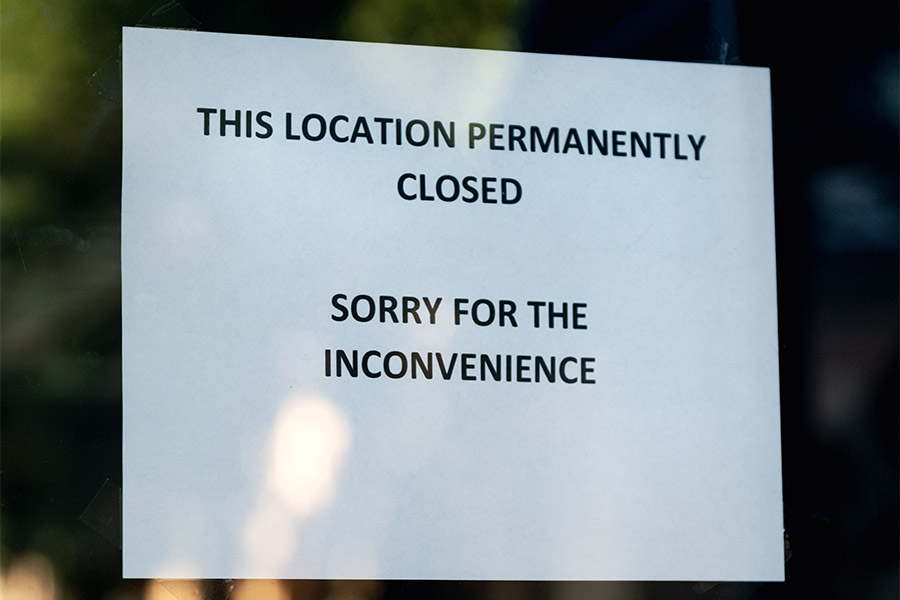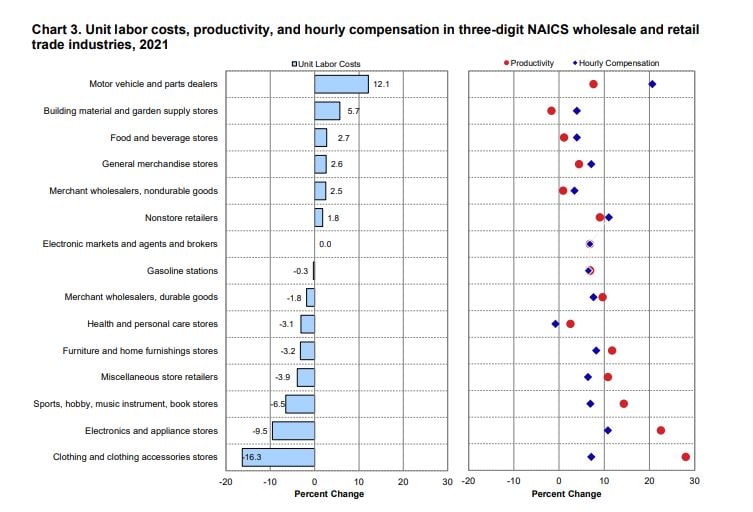
If Your Time is Short
The top three expenses that business owners face include:
- Rent
- Health Insurance
- Employee Wages
If you can manage these expenses deftly, and keep your business lean, not only will you survive, but thrive during a recession. Tough times require vigilance, and only the strongest and leanest will make it through. Read on for an in-depth look at how to survive a recession in 2022.
Employee Wages AKA Labor Costs
We cover this first for a reason. Labor costs are hands down the biggest expense that a business will face. A statistic from the Department of Labor found that depending on the industry, labor can be 50% of business expense!
The Department of Labor 2021 report found that while labor costs on average increased from 1987 to 2021, it did vary from sector to sector.

The Culprit Behind High Labor Costs
It may or may not shock you to learn that one of the primary drivers of increased labor costs comes from overtime. The reason for this is because you are not just paying 50% more for overtime labor, there are also many other hidden costs.
For example, the cost of payroll taxes and workers comp insurance is an average of 15% of the hourly wage of your employee. This means that if your employee makes $20 usually, you have to pay them $30 for overtime, plus 15% of 30, which means in reality it costs around $34.50 for that employee to work 1 hour of overtime.
For some businesses, it makes sense. They will make more from the extra hours logged than they pay for overtime. Usually however, these are massive corporations. Most small and mid-sized businesses have small margins. If you are among these businesses, paying overtime can be the difference between life and death for your company.
New Overtime Rules
On September 24th, 2019, the U.S. Department of Labor ruled that they would raise the threshold for white collar workers overtime exemption salary to 35,568. That means that even more employees are eligible for overtime than ever before.
This is a trend that is not likely to go away any time soon. It is an employee’s market. The cultural trend has undeniably been to increase worker rights and privileges. This is not a bad thing, but it means that businesses must adapt, and cut unnecessary costs where they can. Everyone must be more vigilant.
How to Cut Overtime Costs
The cost of freedom is perpetual vigilance. This is not only a fancy quote, but good words to live by in business. If you want financial independence, it requires diligence on your part. Like it or not, during tough times you’re going to have to take a long hard look at where you’re spending money.
Every week you need to check your payroll and see who is getting overtime and how often. If you handle your payroll internally, come up with a system so you can plainly see your employee’s overtime status.
If you outsource your payroll and use a system, they should be sending you weekly reports. Nearly every payroll system has this functionality. So, if they are not doing that for you, it is time to find out why. These reports are indispensable, yet many do not use them, or are even aware of them.
That’s the problem when you use a massive payroll company, a lot of the time, your business slips through the cracks. Many of these massive payroll companies like Paychex have employees making $15 an hour, and every department is completely compartmentalized from the other. That’s what makes it such a nightmare to interact with them. You must follow a trail of people to even begin understanding what is going on with your account.
If you aren’t getting a weekly report from your payroll company outlining all your costs, and they are telling you that they don’t have a way to do it, or are taking forever to get back to you, it may be time to make a change to a smaller, more responsive, functional, and accurate payroll company.
The Power of KPI’s
Key Performance Indicators. These will save your bacon. Not only do you need weekly status and financial health reports for your business, but you also need to come up with some key metrics that show you how you’re doing.
For example, if your business is closed, your payroll costs should be going down, but are they? If they aren’t, this could be evidence of wage theft, or poor money management. A good payroll company has these metrics laid out plainly in a weekly report with visual aids such as graphics and graph bars, making your life easier.
Rent
The Cost of Doing Business
While labor costs certainly take the cake as the biggest business expense, rent is close behind. A report found that on average you can expect for office space to cost you between 8 to 23 dollars per square foot. A lot of it, depends on where you are.
If you’re in New York City for example, the average cost per square foot is $85.56… yikes. While this varies also depending on the quality of the space, there is no denying that it costs a pretty penny to furnish an office space, no matter where you are.
The Rent to Revenue Ratio
One KPI that your business should be using is the rent-to-revenue ratio. This helps organizations determine how much of their revenue stream should be going towards the space they rent. A good ratio is about 5 to 10 percent of your gross sales per foot should be spent on rent.
The formula for sales per square foot is, Gross Sales/Square footage = Sales per square foot. So, if you make $200,000 in gross sales ever year and you are in a 1,000 square foot office, that’s $200 sales per square foot. To adhere to this formula, that means that you should be spending no more than $20k a year on rent if you are making $200k in sales in a 1k square foot office.
How to Bring Down Rent Costs
If you are not currently meeting the requirements of the formula above, do not panic. There is an ace up your sleeve that you may not have thought of. The pandemic has caused severe hardship across the board.
Small businesses took a huge hit, but according to an SBA report, small businesses still account for 99.9% of US business! That means that for the United States to survive, small businesses have to as well!
Rent rates have skyrocketed. Really the cost of everything has. This does not have to be a death sentence though. It only means that businesses need to adapt. One thing the pandemic has taught businesses is that they have a whole new untapped resource to save money.
That’s because it turns out every employee comes with their own office space, their home! A study found that businesses who let their employees work from home for half of the year saved an average of $11,000 per employee! Moves like those can not only help you survive the pandemic but do better than ever before.
Health Insurance
Costs of Coverage
A report from the Kaiser Family Foundation in 2021 found that the average cost of an employee health program for their family was around $22,000. Health insurance is also a requirement for nearly every business to provide to full-time employees. While it is certainly good that employees have access to good healthcare, it also is quite stifling for businesses, especially if they are struggling during a recession.
Not only that, but labor shortages are also costing businesses big too, and one key factor to attracting and retaining good employees is a strong health insurance plan. The cost of healthcare plans has increased nearly 50% over the last decade. So, you may be asking yourself, what is a small business owner to do?
How You Can Cut Healthcare Costs
- Flexibility – Options. Don’t use a blanket insurance plan to cover every employee. Some may need less coverage; some may need more. Work with your employee to come up with a plan that suits them, which can save you both in the long run. This is something your payroll company should be doing.
- Benefit Integration – Lumping all healthcare benefits into a single plan is a common way to cut costs. Not only does this provide a better quality of care for employees to have access to medical, pharmaceutical, and dental all in one, it also usually comes with discounts.
- Use Telehealth – The pandemic has popularized the concept of telehealth medicine, which is also a low-cost option.
- Promote Wellness – Corporate culture is vital to setting the bar and standard for productivity and performance. If your employees get sick less frequently, it means lower premiums for you. It also means you must pay less for sick leave, and of course, your employees are healthier, which means they will likely perform better. So, make health and wellness a priority in your organization. Foster good habits and it will pay big dividends in the long run.
Organization Adaptation
The key indicator of success for a species is not how strong, fast, or smart they are, but how well they can adapt to changing scenarios. That is because change is truly the only constant. That is why the best advice you can give for how to survive a recession in 2022, is to be ready to adapt.
No one truly knows what the future holds. Be prepared to pivot, to change plans, to learn, assess, analyze, and alter your course. If you stay flexible, aware, and cooperate properly, there are no limits to what your organization can accomplish.

